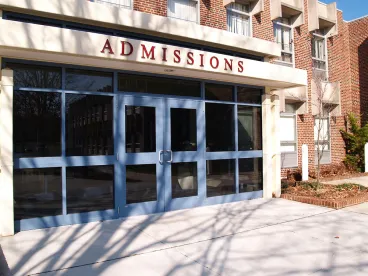Nearly forty-five years after its decision in Regents of the University of California v. Bakke, the Supreme Court appears poised to overturn or significantly depart from its prior approval of the use of race as a “plus factor” in college admissions. Although Justice Kentaji Brown Jackson will succeed Justice Stephen Breyer before the Court hears the case, we expect the conservative justices to prevail by prohibiting the consideration of race in college and university admissions, particularly given that Justice Jackson has indicated that she would likely recuse herself from the case.
On January 24, 2022, the Supreme Court consolidated and granted certiorari in two significant affirmative action cases. Both cases were brought by Students for Fair Admissions, Inc. (SFFA), an organization led by Edward Blum, a conservative activist who has long been involved in litigation concerning voting rights and affirmative action. Past Supreme Court cases brought by organizations lead by Blum include Shelby County v. Holder, which struck down the pre-clearance section of the Voting Rights Act of 1965, and Fisher v. University of Texas II, an unsuccessful attempt at challenging affirmative action in university admissions.
The two cases now pending at the Supreme Court challenge admissions practices at Harvard University and the University of North Carolina-Chapel Hill (UNC), respectively. Of the two, the Harvard case was filed first and has progressed farther in the lower courts. In 2019, after nearly five years of litigation including a trial, the District of Massachusetts ruled for the university, a ruling affirmed in 2020 by the First Circuit. The UNC case was pending trial in the Middle District of North Carolina when the Supreme Court granted certiorari, following unsuccessful cross-motions for summary judgment.
Both cases raise similar legal issues. SFFA’s complaint against Harvard alleged that the school violated Title VI of the Civil Rights Act of 1964 by, among other things, intentionally discriminating against Asian-American applicants, employing racial balancing, failing to use race as a mere “plus factor” as permitted by Grutter v. Bollinger, and failing to utilize race-neutral alternatives. The UNC complaint made similar allegations.
The Harvard case went to trial, with both sides presenting a variety of statistical evidence. In an 81-page opinion, the district court found no evidence of intentional discrimination or racial balancing, stating that (1) the admissions practices of Harvard were consistent with the “plus factor” practices previously approved by the Supreme Court in Grutter and Fisher II and (2) a race-neutral admissions model that weights for low socioeconomic status was not a workable alternative, as trial evidence indicated that it would both reduce racial diversity and lower average entrance test scores. The First Circuit affirmed the district court on all counts. In the UNC case, the court found that a genuine issue of material fact remained regarding whether UNC’s admissions policies used race as more than a “plus factor” and whether a workable race-neutral alternative exists. The Supreme Court took the highly unusual step of granting direct appeal in the UNC case without consideration by the Fourth Circuit.
The last time the Supreme Court considered a challenge to affirmative action was in 2016 in Fisher v. University of Texas II, a case also spearheaded by Blum. However, there are strong reasons to believe the Supreme Court may rule differently here than in Fisher II. The majority of the eight-member Court that decided Fisher II consisted of Justices Kennedy, Ginsburg, Breyer and Sotomayor, with Justices Thomas, Alito, and Chief Justice Roberts dissenting and Justice Kagan abstaining. Today, only Justice Sotomayor will remain of the Fisher II majority when this case is heard, while all the dissenting justices are still on the Court. Even if Justice Jackson does not recuse herself and Justice Kagan sides with the universities, a repeat of Fisher II would likely require convincing two of the three Trump-appointed justices to side with the court’s liberals. Additionally, the grant of certiorari for the UNC case when, under existing law, dispositive questions of fact were yet unresolved, has led some observers to argue that the Court intends to address not merely a clarification of existing law, but whether any consideration of race in university admissions is permitted at all by the Constitution. Most Court observers believe the Court granted certiorari because the majority wants the Court to consider moving away from its long line of cases that have permitted the use of race in college admissions.
Should the court prohibit race-based affirmative action, it would represent an overturning of a nearly forty-five-year-old precedent established in Regents of the University of California v. Bakke, and further cement this Court’s reputation as one that is open to reconsidering the established rulings of previous Courts. And, if the Court disallows consideration of race in college admissions, the decision could have significant ripple effects in other areas in which race is similarly considered, such as employment, federal and state contracting, and grant-making.
Arguments in Students for Fair Admissions, Inc. v. President and Fellows of Harvard College will be heard by the Supreme Court in the upcoming term, which begins on October 3, 2022. The Court is likely to issue its opinion in mid-2023.



 />i
/>i

